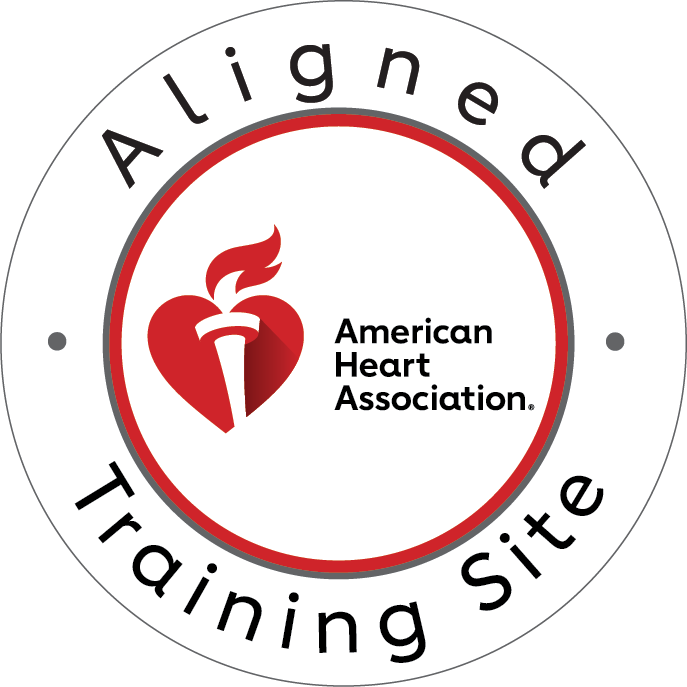Introduction
In moments of cardiac emergencies, every second counts. A swift and effective response can be the difference between life and death. Amidst the chaos and urgency of such situations, Automated External Defibrillators (AEDs) emerge as vital tools, capable of restoring normal heart rhythms and saving lives.
Welcome to “AED 101: Your Comprehensive Guide to Automated External Defibrillator.” In this guide, we embark on a journey to demystify the role of AEDs in emergencies, equip you with the knowledge of their operation, and underscore the significance of AED training and accessibility.
Understanding the Importance
Imagine witnessing a loved one, colleague, or stranger collapse suddenly due to a cardiac arrest. The fear and helplessness that accompany such moments are undeniable. However, armed with the knowledge of Automated External Defibrillators, you can transform these moments of despair into opportunities for life-saving action.
An Automated External Defibrillator (AED) is a portable device designed to deliver an electric shock to the heart, thus restoring normal heart rhythm during sudden cardiac arrest. This device is engineered to be user-friendly, making it accessible to individuals with minimal medical training.
What is an Automated External Defibrillator (AED)?
An Automated External Defibrillator (AED) is more than just a piece of medical equipment; it’s a beacon of hope in times of cardiac crisis. But what exactly is an AED, and how does it function?
Definition and Basic Function
At its core, an AED is a portable electronic device designed to assess a person’s heart rhythm and deliver a therapeutic shock if necessary. This shock, known as defibrillation, aims to restore the heart’s normal rhythm in cases of sudden cardiac arrest (SCA).
Unlike the defibrillators used by medical professionals, which require extensive training to operate, AEDs are designed for use by individuals with minimal to no medical training. This accessibility is crucial because it allows bystanders to intervene swiftly in emergencies, potentially saving precious minutes until professional medical help arrives.
Importance of AED in Saving Lives
Sudden cardiac arrest is a leading cause of death globally, claiming millions of lives each year. In many cases, the outcome hinges on the timely administration of CPR (Cardiopulmonary Resuscitation) and defibrillation. AEDs play a pivotal role in this process by delivering the shock needed to restore the heart’s rhythm, significantly increasing the chances of survival.
Research has consistently shown that the prompt use of an AED, along with CPR, can dramatically improve survival rates in cases of sudden cardiac arrest. Every minute without defibrillation decreases the chance of survival by approximately 7-10%. Therefore, having accessible AEDs in public spaces and workplaces can be the difference between life and death.
Overview of How AED Works
Understanding how an AED works is essential for effectively utilizing this life-saving device. A typical AED consists of a few key components: electrodes (or pads), a control unit, and a battery. When turned on, the AED provides clear audio and visual instructions to guide the user through the process.
Upon applying the electrode pads to the victim’s chest, the AED automatically analyzes the heart rhythm to determine whether a shock is needed. If the device detects a shockable rhythm, it prompts the user to stand clear and delivers a controlled electric shock to the heart. This shock aims to interrupt chaotic electrical activity and allow the heart to re-establish an effective rhythm.
How to Use an AED
Now that we’ve covered the basics of what an Automated External Defibrillator (AED) is and why it’s crucial in saving lives, let’s delve into the step-by-step process of using one. Despite their life-saving potential, AEDs are designed to be user-friendly, making them accessible to individuals with minimal medical training.
Step-by-Step Guide to Operating an AED
Assessing the Situation: Before anything else, ensure the safety of yourself, the victim, and the bystanders. Check for any hazards or dangers in the vicinity, such as traffic or electrical wires, and proceed cautiously.
Preparing the Patient: If the victim is unresponsive and not breathing normally, lay them flat on their back on a firm surface. Begin CPR immediately if necessary, and if available, instruct someone to call emergency services and retrieve the nearest AED.
Applying AED Pads: Once the AED arrives, power it on and follow the device’s prompts. Expose the victim’s bare chest and attach the electrode pads as directed. One pad should be placed on the upper right side of the chest, just below the collarbone, and the other on the lower left side of the chest, just below the armpit. Ensure the pads adhere firmly to the skin and are not touching each other.
Analyzing Heart Rhythm: After the pads are applied, the AED will automatically analyze the victim’s heart rhythm. Ensure that no one is touching the patient during this time, as movement can interfere with the device’s ability to accurately assess the rhythm.
Delivering Shocks: If the AED detects a shockable rhythm, it will prompt you to stand clear and deliver a shock. Ensure that no one is touching the victim and follow the device’s instructions precisely. The AED will deliver the shock automatically, and you should continue to follow its prompts until emergency medical help arrives.
Illustrative Examples or Diagrams for Clarity
Visual aids can significantly enhance understanding, especially when it comes to learning life-saving techniques like operating an AED. Here, we provide illustrative examples or diagrams that depict each step of the process described above. These visuals serve as valuable references, reinforcing the concepts outlined in this guide and empowering you to act confidently in emergencies.
Understanding AED Safety
While Automated External Defibrillators (AEDs) are invaluable tools in saving lives during cardiac emergencies, it’s essential to understand and practice safety precautions when using them. In this section, we’ll explore key safety considerations, address common misconceptions, and emphasize the importance of training and certification in AED usage.
Safety Precautions to Take When Using an AED
Ensure Scene Safety: Before deploying an AED, assess the scene for any potential hazards or dangers. Ensure the area is safe for both the victim and rescuers, taking precautions to avoid electrical hazards, traffic, or other risks.
Minimize Movement: To ensure accurate analysis and delivery of shocks, minimize movement around the victim during AED use. Instruct bystanders to stand clear and avoid unnecessary interference with the device.
Check for Pacemakers or Implants: Before applying AED pads, check for the presence of pacemakers or other implanted medical devices on the victim’s chest. Avoid placing pads directly over such devices to prevent interference with their function.
Remove Excess Moisture: Ensure the victim’s chest is dry before applying AED pads. Excess moisture, such as sweat or water, can hinder the pads’ ability to adhere properly and may affect the device’s performance.
Follow Device Instructions: Adhere strictly to the instructions provided by the AED during use. Follow prompts for electrode pad placement, shock delivery, and CPR administration to maximize the effectiveness of the intervention.
Common Misconceptions About AED Safety
Risk of Shocking Bystanders: One common misconception is that using an AED poses a risk of shocking bystanders. However, modern AEDs are designed with built-in safety features that analyze the victim’s heart rhythm and only deliver a shock if necessary. Additionally, clear audio and visual prompts guide users through the process, minimizing the risk of accidental shocks.
Fear of Liability: Some individuals may hesitate to use an AED due to fear of legal liability. However, Good Samaritan laws in many jurisdictions protect bystanders who provide emergency assistance, including the use of AEDs, from civil liability as long as they act in good faith and within their scope of training.
Complexity of Use: Another misconception is that AEDs are complicated to use and require extensive training. While formal training is beneficial, AEDs are designed to be user-friendly, with intuitive interfaces and clear instructions. Basic CPR and AED certification courses provide individuals with the skills and confidence needed to effectively use these devices.
Importance of Training and Certification in AED Usage
While AEDs are designed for ease of use, formal training and certification are essential for maximizing their effectiveness and ensuring proper safety protocols are followed. CPR and AED certification courses provide individuals with hands-on training in AED operation, CPR techniques, and emergency response protocols.
CPR Classes Tampa offers American Heart Association-certified courses in Basic Life Support (BLS) for Healthcare Providers, Advanced Cardiovascular Life Support (ACLS), Pediatric Advanced Life Support (PALS), and CPR and First Aid. Our courses are conducted in a stress-free, hands-on environment, ensuring participants gain the knowledge and skills needed to respond effectively in emergencies.
AED Maintenance and Care
Ensuring the proper maintenance and care of Automated External Defibrillators (AEDs) is essential to their reliability and effectiveness during cardiac emergencies. In this section, we’ll discuss best practices for AED maintenance, including storage, regular checks, and readiness protocols.
Proper Storage of AED Equipment
Temperature and Environment: AEDs should be stored in a controlled environment with moderate temperature and humidity levels. Avoid exposing the device to extreme temperatures or moisture, as this can damage electronic components and affect performance.
Accessibility: AEDs should be readily accessible in case of emergencies. Ensure that the device is stored in a visible and easily accessible location, preferably in designated AED cabinets or wall-mounted enclosures.
Protection from Damage: Protect the AED from physical damage by storing it in a secure location away from high-traffic areas or potential hazards. Consider installing protective covers or cases to shield the device from impact or environmental elements.
Regular Checks and Maintenance Procedures
Visual Inspection: Conduct regular visual inspections of the AED to ensure it is in good working condition. Check for any signs of damage, corrosion, or wear and tear on the device, electrodes, battery, and accessories.
Battery Status: Monitor the battery status indicator on the AED and replace the battery as needed according to manufacturer recommendations. Maintain spare batteries on hand to ensure uninterrupted operation during emergencies.
Electrode Pads: Check the expiration date and integrity of the electrode pads regularly. Replace expired or damaged pads promptly to ensure optimal adhesion and conductivity during use.
Software Updates: Stay updated on any software updates or firmware upgrades provided by the manufacturer. These updates may include improvements to device functionality, performance enhancements, or new features.
Ensuring AED Readiness in Emergency Situations
Regular Testing: Perform routine self-tests or diagnostic checks on the AED to verify proper functionality and readiness. Most modern AEDs are equipped with automated self-testing features that assess key components such as battery status, electrode integrity, and software functionality.
Training and Familiarization: Ensure that designated personnel are trained and familiar with AED operation and maintenance protocols. Conduct regular training sessions or refresher courses to reinforce skills and ensure readiness in emergencies.
Emergency Response Plan: Incorporate AED deployment and usage protocols into your organization’s emergency response plan. Establish clear procedures for accessing and deploying the AED, notifying emergency services, and coordinating with trained responders.
By adhering to these best practices for AED maintenance and care, you can ensure that these life-saving devices remain ready for use when needed most. In the next section, we’ll explore the importance of AED training and certification, empowering individuals to respond effectively in cardiac emergencies. Stay tuned as we delve into the benefits of hands-on training and practice sessions offered by CPR Classes Tampa.
AED Training and Certification
While Automated External Defibrillators (AEDs) are designed to be user-friendly, formal training and certification are essential for maximizing their effectiveness and ensuring proper utilization during cardiac emergencies. In this section, we’ll discuss the importance of AED training and certification, the benefits of hands-on training, and the comprehensive courses offered by CPR Classes Tampa.
Importance of Receiving Formal Training in AED Operation
Confidence and Competence: AED training provides individuals with the knowledge and skills needed to respond confidently and competently in emergencies. Proper training ensures that responders understand how to operate the device effectively, assess the situation, and provide appropriate interventions.
Safety and Efficacy: Training in AED operation enhances safety by ensuring that responders follow proper protocols and guidelines. This minimizes the risk of errors or accidental harm to the victim and maximizes the efficacy of the intervention.
Team Collaboration: AED training fosters collaboration and coordination among team members during emergency responses. Trained individuals can work together seamlessly to deploy the AED, perform CPR, and communicate effectively with emergency services.
Overview of CPR Classes Tampa
American Heart Association Certification: CPR Classes Tampa is an American Heart Association (AHA) training site that offers a range of certification courses, including Basic Life Support (BLS) for Healthcare Providers, Advanced Cardiovascular Life Support (ACLS), Pediatric Advanced Life Support (PALS), and CPR and First Aid.
Stress-Free and Hands-On: Our courses are designed to provide a stress-free and hands-on learning experience, ensuring participants feel confident and prepared to respond to real-life emergencies. Our experienced instructors guide participants through interactive training sessions, simulations, and practical exercises to reinforce key concepts and skills.
Flexible Training Options: CPR Classes Tampa offers flexible training options to accommodate diverse schedules and learning preferences. We provide both initial certification and renewal courses, allowing participants to obtain or maintain their certification conveniently.
Benefits of Hands-On Training and Practice Sessions
Skill Development: Hands-on training allows participants to develop practical skills in AED operation, CPR techniques, and emergency response procedures. Interactive simulations and practice sessions simulate real-life scenarios, providing valuable experience and confidence.
Immediate Feedback: Hands-on training enables instructors to provide immediate feedback and guidance to participants, helping them refine their techniques and address any areas of concern. This real-time feedback enhances learning and retention of essential skills.
Team Building: Hands-on training fosters teamwork and collaboration among participants, creating a supportive learning environment where individuals can learn from each other’s experiences and perspectives.
By enrolling in AED training and certification courses offered by CPR Classes Tampa, you can gain the knowledge, skills, and confidence needed to respond effectively in cardiac emergencies. Our comprehensive courses ensure that participants are equipped to make a difference and save lives when every second counts.
Conclusion
As we conclude our comprehensive guide to Automated External Defibrillators (AEDs), it’s crucial to emphasize the pivotal role these devices play in saving lives during cardiac emergencies. From grasping the fundamentals of AED operation to advocating for their widespread accessibility, each aspect covered in this guide underscores the significance of AEDs in our communities.
Recap of Key Points Covered
Understanding AED Functionality: We delved into the definition and basic function of AEDs, emphasizing their capacity to deliver life-saving shocks and restore normal heart rhythms during sudden cardiac arrest.
Step-by-Step Guide to AED Use: We provided a detailed step-by-step guide to operating an AED, empowering readers with the knowledge and skills necessary to respond effectively in emergencies.
AED Safety and Maintenance: We discussed safety precautions, debunked common misconceptions, and outlined best practices for AED maintenance to ensure device reliability and effectiveness.
Importance of AED Training and Certification: We highlighted the significance of formal training and certification in AED operation, emphasizing the benefits of hands-on training and the comprehensive courses offered by CPR Classes Tampa.
Final Thoughts
Automated External Defibrillators are not merely medical devices; they symbolize hope and potential in moments of crisis. Each AED deployed represents a chance to save a life, to make a profound difference in someone’s darkest hour. By equipping ourselves with the knowledge, skills, and resources needed to respond effectively, we become proactive agents of change in our communities.
As you continue your journey, remember the power you hold to be a life-saving hero. Whether through training, advocacy, or simply being prepared to act in an emergency, your actions can have a profound impact. Together, let’s champion the accessibility, awareness, and utilization of AEDs, ensuring that no life is lost to sudden cardiac arrest when every second counts. Thank you for joining us on this journey through “AED 101: Your Comprehensive Guide to Automated External Defibrillator.” May you carry forward the knowledge and passion to empower others and save lives. And remember, for the best CPR training in Tampa, look no further than CPR Certification Tampa, where stress-free, hands-on classes ensure you’re prepared to respond in any emergency.




